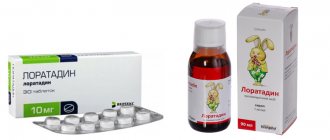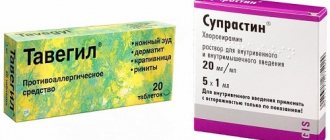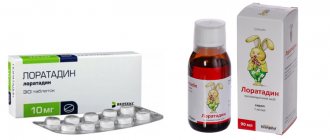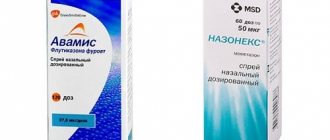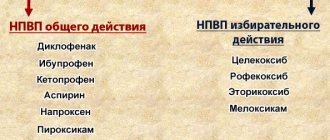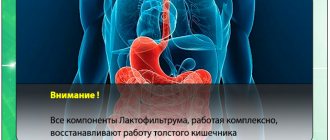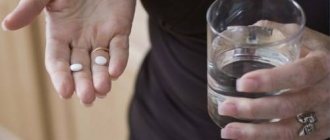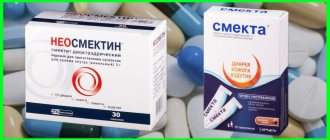The problem of allergic diseases concerns people of different ages: at present, fairly clear schemes have been developed for the treatment of patients of this profile. Therapy is predominantly multicomponent, but it is always based on antihistamines. Drugs in this group allow you to influence the main link of the allergic reaction, thereby eliminating the entire pathogenesis of the existing problem. One of them is Xizal.
Information from the manufacturer about the medicinal product and active substance
The drug "Xyzal", analogues of which will be presented to you today, is available in two dosage forms:
- tablets in the amount of 7 pieces cost about 300-350 rubles (you can buy a large package at the pharmacy, including 14 capsules);
- 10 ml drops will cost 500 rubles.
Both types of medication contain the active substance levocetirizine hydrochloride. Each tablet, like one milliliter of solution, includes 5 mg of the active component with excipients.
The medicine "Xyzal" is an over-the-counter antiallergic drug. The active substance blocks histamine H1 receptors. The medication reduces the production of inflammatory mediators, eliminates vascular permeability, and also reduces the migration of eosinophils. After ingestion, Xyzal drops and tablets are immediately absorbed from the digestive tract. The noticeable effect can be reversed within an hour after using this drug. The effectiveness of the medicine remains throughout the day.
Release form and composition
Dosage forms of Xizal:
- Film-coated tablets: oval, almost white or white in color, with an embossed Y marking on one side (7 or 10 pieces in blisters, 1 or 2 blisters in a cardboard pack);
- Drops for oral administration: slightly opalescent colorless liquid (10 or 20 ml in dark glass bottles with a dropper, 1 bottle in a cardboard box).
Active ingredient: levocetirizine dihydrochloride:
- 1 tablet – 5 mg;
- 1 ml drops – 5 mg.
Excipients:
- Tablets: microcrystalline cellulose, lactose monohydrate, magnesium stearate, colloidal silicon dioxide;
- Drops: sodium acetate, propylene glycol, glycerol 85%, sodium saccharinate, propyl parahydroxybenzoate, methyl parahydroxybenzoate, acetic acid, purified water.
Additionally, the film shell of the tablets contains: opadry Y-1-7000 (macrogol 400, titanium dioxide (E171), hypromellose).
Indications and contraindications for use
The use of the antihistamine "Xyzal" is indicated for the following allergic reactions:
- seasonal or year-round rhinitis, conjunctivitis, lacrimation;
- hay fever;
- skin manifestations (urticaria, swelling, hyperemia);
- itching and rashes of various origins, including after insect bites.
The medication in any form is prohibited for use in patients with hypersensitivity. Such people should not use absolute substitutes for the drug “Xyzal” (analogues of the active substance). Kidney failure, breastfeeding and pregnancy are what prohibit the use of this antihistamine. Children under 6 years of age are prohibited from using the tablet form, and even drops are prohibited for children under 2 years of age. If antihistamine therapy is necessary in young children, alternative drugs based on other active ingredients should be used.

Contraindications and side effects
The medicine has contraindications:
- Children taking drops and tablets up to 2 years of age;
- Taking tablets by children under 6 years of age (due to insufficient experimental data);
- Signs of kidney failure;
- Individual intolerance to the drug, usually in children with a high level of sensitivity to lactose.
Side effects, the main cause of which is excessive dosage, may include drowsiness, dizziness, and tachycardia. Less commonly, in cases where the instructions for taking the medication were violated, convulsions, blurred vision, depression, vomiting, and diarrhea occur. No side effects were identified when taken with other medications.
The drug is completely contraindicated for infants under one year of age.

Instructions for use of the drug "Xyzal" for children and adults
Tablets and drops are taken orally, regardless of the time of eating. The medicine should be taken with water. Reception is carried out once a day (for small children 2 times):
- for children over 6 years of age and adult patients 5 mg of the active substance (this amount is contained in one tablet or 20 drops);
- Children from 2 to 6 years old are recommended to take 2.5 mg (exactly 10 drops), divided into two doses.
The duration of the therapeutic course is set by the doctor in accordance with the indications. The medicine can be used once or for a long time (up to six months). Do not exceed the recommended dose of the medication. An overdose can lead to drowsiness and severe sedation, which is not observed when the drug is used correctly. It is unacceptable to combine this medicine with any alcoholic beverages, as there is a serious risk for the patient. You can drink alcohol only after the active substance has been completely removed from the human body. An allergic reaction that occurs during alcohol intoxication should be eliminated with safer medications - analogues based on other substances.
Xyzal®
The pharmacokinetic parameters of levocetirizine change linearly and practically do not differ from the pharmacokinetics of cetirizine.
Suction
After oral administration, the drug is quickly and completely absorbed from the gastrointestinal tract. Eating does not affect the completeness of absorption, although its speed decreases. In adults, after a single dose of the drug in a therapeutic dose (5 mg), the maximum concentration (Cmax) in the blood plasma is reached after 0.9 hours and is 270 ng/ml, after repeated administration at a dose of 5 mg - 308 ng/ml. Equilibrium concentration is achieved after 2 days.
Distribution
Levocetirizine is 90% bound to plasma proteins. The volume of distribution (Vd) is 0.4 l/kg. Bioavailability reaches 100%.
Metabolism
In small quantities (<14%) it is metabolized in the body by N- and O-dealkylation (unlike other H1-histamine receptor antagonists, which are metabolized in the liver using the cytochrome system) to form a pharmacologically inactive metabolite. Due to negligible metabolism and lack of metabolic potential, interaction of levocetirizine with other drugs is unlikely.
Removal
In adults, the half-life (T1/2) is 7.9 ± 1.9 hours; in young children T1/2 is shortened. In adults, the total clearance is 0.63 ml/min/kg. About 85.4% of the administered dose of the drug is excreted unchanged by the kidneys through glomerular filtration and tubular secretion; about 12.9% - through the intestines.
Selected patient groups
Patients with kidney failure
In patients with renal failure (creatinine clearance (CC) < 40 ml/min), the clearance of the drug is reduced and T1/2 is prolonged (for example, in patients on hemodialysis, the total clearance is reduced by 80%), which requires a corresponding change in the dosage regimen . Less than 10% of levocetirizine is removed during a standard 4-hour hemodialysis procedure.
Patients with liver failure
The pharmacokinetics of levocetirizine in patients with hepatic impairment have not been studied. In patients with chronic liver diseases (hepatocellular, cholestatic and biliary cirrhosis) receiving the racemic compound cetirizine at a dose of 10 or 20 mg as a single dose, an increase in half-life by 50% and a decrease in clearance of the drug by 40% were observed, compared with healthy people.
Children
Data from a study of the pharmacokinetics of the drug in 14 children aged 6 to 11 years weighing from 20 to 40 kg with a single oral dose of 5 mg of levocetirizine showed that Cmax and area under the curve (AUC) were approximately twice as high as in healthy adults with cross-control. The mean Cmax was 450 ng/ml, the maximum concentration was reached after an average of 1.2 hours, the total body weight-adjusted clearance was 30% higher, and the half-life was 24% shorter in children than in adults. Specific pharmacokinetic studies have not been conducted in children under 6 years of age. A retrospective pharmacokinetic analysis was conducted in 323 patients (181 children aged 1 to 5 years, 18 children aged 6 to 11 years, and 124 adults aged 18 to 55 years) who received one or more doses of levocetirizine 1.25 mg. up to 30 mg. Data obtained during the analysis showed that taking the drug at a dose of 1.25 mg in children aged 6 months to 5 years leads to plasma concentrations similar to those in adults when taking 5 mg of the drug once a day.
Elderly patients
Pharmacokinetic data in elderly patients is limited. When repeated dosing of levocetirizine 30 mg once daily for 6 days in 9 elderly patients (ages 65 to 74 years) total clearance was approximately 33% lower than that in younger adults. The distribution of cetirizine racemate has been shown to be more dependent on renal function than on age. This statement may also apply to levocetirizine, since both levocetirizine and cetirizine are excreted primarily in the urine. Therefore, in elderly patients, the dose of levocetirizine should be adjusted depending on renal function.
When are Xyzal analogues needed?
Substitutes for the drug have to be sought for various reasons. Some consumers try to save money in this way by buying cheaper medicines. Others prefer to take what is available at a certain pharmacy. It happens that the declared product is not available. Then the pharmacist offers the buyer a substitute for the drug “Xyzal” - an analogue.
Patients who are hypersensitive to the active substance or minor components need to use an alternative antihistamine that will not cause adverse reactions in them. Let's take a closer look at how you can replace Xyzal tablets and drops without harming yourself.
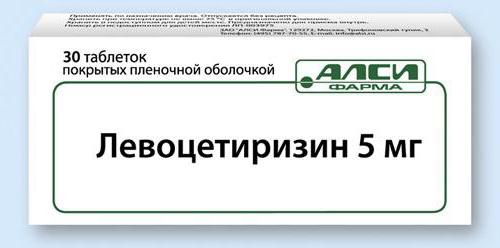
Comparison of the effectiveness of Xizal and Suprastinex
The effectiveness of Xizal is quite similar to Suprastinex - this means that the ability of the drug substance to provide the maximum possible effect is similar.
For example, if the therapeutic effect of Xizal is more pronounced, then using Suprastinex even in large doses will not achieve this effect.
Also, the speed of therapy - an indicator of the speed of therapeutic action - is approximately the same for Xyzal and Suprastinex. And bioavailability, that is, the amount of a drug reaching its site of action in the body, is similar. The higher the bioavailability, the less it will be lost during absorption and use by the body.
Inexpensive "Levocetirizine"
The drug "Xyzal" has cheaper analogues. Such drugs are in great demand. They work no worse, but at the same time save the budget. At the pharmacy without a prescription you can buy:
- “Levocetirizine Teva” (150 rubles);
- “Levocetirizine Sandoz” (250 rubles).
It is not recommended to use these drugs in severe chronic kidney failure, as well as in childhood. The course of treatment for acute manifestations lasts up to a month. Chronic allergic manifestations require longer therapy - up to one and a half years. You should not combine therapy with this drug while simultaneously performing important work that requires a quick response.
Comparison of ease of use of Xyzal and Suprastinex
This includes dose selection taking into account various conditions and frequency of doses. At the same time, it is important not to forget about the release form of the drug; it is also important to take it into account when making an assessment.
The ease of use of Xizal is approximately the same as Suprastinex. However, they are not convenient enough to use.
The drug ratings were compiled by experienced pharmacists who studied international research. The report is generated automatically.
Last update date: 2019-09-19 05:59:52
Famous "Suprastinex"
Do you want to replace the medicine "Xyzal"? The analogue that pharmacists will most likely recommend to you is Suprastinex tablets. The active ingredient of this drug is the same levocetirizine. The cost of tablets is about 250 rubles, and drops cost no more than 400. It is safe to say that these analogues of Xizal are cheaper.
The indications for the use of this medicine include Quincke's edema. This is the difference between the medicine and its predecessor. Although the drug is not recommended for use during pregnancy, like other levocetirizine-based substitutes, animal studies have shown no teratogenic effect on the fetus.

Use during pregnancy and lactation
Adequate and strictly controlled clinical studies on the safety of the use of Xyzal in pregnant women have not been conducted, therefore it is recommended to refrain from prescribing it during pregnancy. Levocetirizine passes into breast milk, so if you need to take it during lactation, you should avoid breastfeeding until the end of the course of treatment. Experimental studies on animals did not reveal any direct or indirect adverse effects of levocetirizine on the developing fetus (including the postnatal period), pregnancy and childbirth also occurred within normal limits.
"Zodak Express"
Since it is not possible to use Xyzal drops for small children, analogues of the drug should be selected that are similar in action, but with a different active substance. Doctors prescribe Zodak drops for babies from six months of age. This drug is different from the one called Zodak Express. It is important not to confuse them.
The medicine "Zodak Express" is made on the basis of levocetirizine. The cost of tablets is 300 rubles. The medication is used one tablet per day by adult patients. Children from 6 to 12 years old are recommended to be given half a tablet in two doses (morning and evening).
The best 4th generation antihistamines
People who periodically suffer from allergies know best what antihistamines are.
Sometimes only timely medication can save them from painfully itchy rashes, severe coughing attacks, swelling and redness.
4th generation antihistamines are modern drugs that act on the body instantly. In addition, they are quite effective. The results from them last for a long time.
Impact on the body
To understand how 4th generation antihistamines differ, you need to understand the mechanism of action of antiallergic drugs.
These medications block H1 and H2 histamine receptors. This helps reduce the body's reaction to the mediator histamine. Thus, the allergic reaction is relieved. In addition, these drugs serve as an excellent prevention of bronchospasms.
Let's consider antihistamines of all generations. This will allow you to understand the advantages of modern means.
First generation drugs
This category includes sedative drugs. They block H1 receptors. The duration of action of these drugs is 4-5 hours. Medicines have an excellent antiallergic effect, but have a number of disadvantages, including:
- pupil dilation;
- dry mouth;
- blurred vision;
- drowsiness;
- decreased tone.
Common first generation medications are:
- "Diphenhydramine";
- "Diazolin";
- "Tavegil";
- "Suprastin";
- "Peritol";
- "Pipolfen";
- "Fenkarol".
These drugs are usually prescribed to people suffering from chronic diseases that cause difficulty breathing (bronchial asthma). In addition, they will have a beneficial effect in case of acute allergic reaction.
2nd generation drugs
These medications are called non-sedatives. Such products no longer have an impressive list of side effects. They do not provoke drowsiness or decreased brain activity. Medicines are in demand for allergic rashes and itchy skin.
The most popular drugs:
- "Claritin";
- "Trexyl";
- "Zodak";
- "Fenistil";
- "Gistalong";
- "Semprex".
However, the big disadvantage of these drugs is their cardiotoxic effects. That is why these drugs are prohibited for use by people suffering from cardiovascular pathologies.
3rd generation drugs
These are active metabolites. They have excellent antiallergic properties and have a minimal list of contraindications. If we talk about effective antiallergic drugs, then these drugs are precisely modern antihistamines.
Which drugs from this group are the most popular? These are the following medications:
- "Zyrtec";
- "Cetrin";
- Telfast.
They do not have a cardiotoxic effect. They are often prescribed for acute allergic reactions and asthma. They provide excellent results in the fight against many dermatological diseases.
4th generation drugs
Recently, specialists have invented new medicines. These are 4th generation antihistamines. They are distinguished by their rapid action and long-lasting effect. Such drugs perfectly block H1 receptors, eliminating all unwanted allergy symptoms.
The great advantage of such medications is that their use does not harm the functioning of the heart. This allows us to consider them quite safe means.
However, we should not forget that they have contraindications. This list is quite small, mainly children and pregnancy. But it is still recommended to consult a doctor before use. It would be useful to study the instructions in detail before using 4th generation antihistamines.
The list of such drugs is as follows:
- "Levocetirizine";
- "Erius";
- "Desloratadine";
- "Ebastine";
- "Fexofenadine";
- "Bamipin";
- "Fenspiride";
- "Cetirizine";
- "Xyzal."
The best drugs
It is quite difficult to identify the most effective drugs from the 4th generation. Since such drugs were developed not so long ago, there are few new antiallergic drugs available. In addition, all drugs are good in their own way. Therefore, it is not possible to identify the best 4th generation antihistamines.
Medicines containing fenoxofenadine are in great demand. Such drugs do not have a hypnotic or cardiotoxic effect on the body. These drugs today rightfully occupy the place of the most effective antiallergic medications.
Cetirizine derivatives are often used to treat skin manifestations. After taking 1 tablet, the result is noticeable after 2 hours. At the same time, it persists for quite a long time.
The medicine “Xyzal” has earned great popularity. It perfectly blocks the process of releasing inflammatory mediators. As a result of this effect, this remedy reliably eliminates allergic reactions.
Medicine "Cetirizine"
This is a fairly effective remedy. Like all modern 4th generation antihistamines, the medicine is practically not metabolized in the body.
The drug has proven itself to be highly effective for skin rashes, as it is able to penetrate perfectly into the epidermis. Long-term use of this medication in children suffering from early atopic syndrome significantly reduces the risk of progression of such conditions in the future.
2 hours after taking the tablet, the desired lasting effect occurs. Since it lasts for a long time, taking 1 pill per day is enough. Some patients can take 1 tablet every other day or twice a week to achieve the desired result.
The medicine has a minimal sedative effect. However, patients suffering from kidney pathologies should use this remedy with extreme caution.
The drug in the form of a suspension or syrup is approved for use in children from two years of age.
Medicine "Fexofenadine"
This drug is a metabolite of terfenadine. This medication is also known as Telfast. Like other 4th generation antihistamines, it does not cause drowsiness, is not metabolized and does not affect psychomotor functions.
This remedy is one of the safe, but at the same time extremely effective drugs among all antiallergic medications. The drug is in demand for any manifestations of allergies. Therefore, doctors prescribe it for almost all diagnoses.
Antihistamine tablets "Fexofenadine" are prohibited for use by children under 6 years of age.
The drug "Desloratadine"
This medicine is also a popular antiallergic drug. It can be used for any age groups. Since medical pharmacologists have proven its high safety, this drug is sold in pharmacies without a prescription.
The drug has a slight sedative effect, does not have a detrimental effect on cardiac activity, and does not affect the psychomotor sphere. Often the medicine is well tolerated by patients. In addition, it does not interact with other medications.
One of the most effective medications from this group is the drug “Erius”. This is a fairly powerful antiallergic medicine. However, it is contraindicated during pregnancy. In syrup form, the medicine is approved for use by children from 1 year of age.
The drug "Levocetirizine"
This remedy is better known as “Suprastinex”, “Cesera”. This is an excellent drug that is prescribed to patients suffering from an allergic reaction to pollen. The remedy is prescribed in case of seasonal manifestations or year-round. The drug is in demand in the treatment of conjunctivitis and allergic rhinitis.
It is recommended to take the medicine in the morning or during meals. The drug should not be combined with alcohol.
Conclusion
New generation drugs are active metabolites of previously used drugs. Undoubtedly, this property makes 4th generation antihistamines extremely effective.
Medicines are not metabolized in the human body, but they give a long-lasting and pronounced result.
Unlike previous generations of drugs, such drugs do not have a detrimental effect on the liver.
Source: https://FB.ru/article/192120/luchshie-antigistaminnyie-preparatyi-pokoleniya
Expensive "Glenset"
The medicine "Xyzal" has an analogue that is not only cheaper, but also more expensive. This is how the drug “Glencet” became. It is produced in India. The cost of 14 tablets is about 600 rubles. This remedy is often prescribed for the treatment of skin allergic manifestations. For seasonal rhinitis, conjunctivitis and hay fever, it is used less frequently. Unlike its predecessors, Glencet can be used simultaneously with alcohol, but this combination should be avoided as the risk of side effects increases.
Reviews about the drug say that it copes with its tasks perfectly without causing sedation. It is assumed that this medicine contains a purified active substance that has undergone special processing. For this reason, the cost of the medicine has also increased.
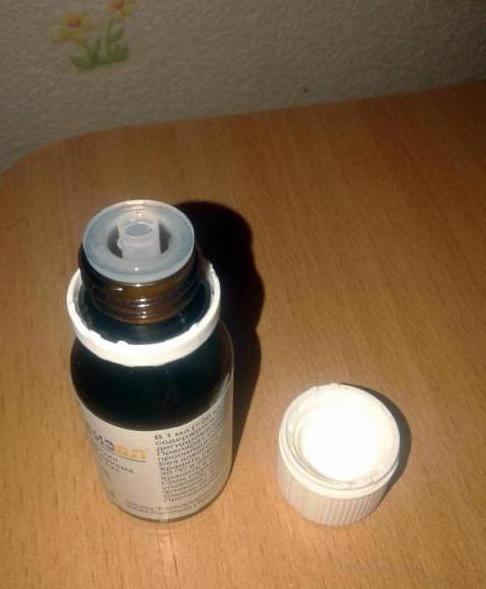
Side effects
The use of Xizal may cause side effects:
- From the cardiovascular system: very rarely – tachycardia;
- From the nervous system: infrequently – fatigue, drowsiness and headache; rarely – general weakness; very rarely - agitation, aggression, convulsions, depression, blurred vision, hallucinations;
- From the respiratory system: very rarely - shortness of breath (dyspnea);
- Metabolic disorders: very rarely – increased body weight;
- From the digestive system: infrequently – dry mouth; rarely – abdominal pain; very rarely - diarrhea, nausea, changes in liver function tests, hepatitis;
- From the musculoskeletal system: very rarely – myalgia;
- Allergic reactions: very rarely - rash, itching, urticaria, anaphylaxis, angioedema.
Little-known Caeser tablets
An analogue of Xizal is Cesera tablets. This medicine is produced in Slovenia. Consumer reviews say that this medicine is quite difficult to find in Russian pharmacy chains. Therefore, it is often replaced with generics, for example, the drug "Xyzal". An analogue called “Cesera” is used for the same indications as the claimed remedy. Due to the low availability of the drug, doctors try not to prescribe it. But if there is a need for this, then the pharmacy product can be ordered at individual pharmacies or purchased online. The cost of such a service will be higher than the price category of the drug “Xyzal”.
What to choose?
You already know what analogues the drug “Xyzal” has. What is best to choose for treatment is up to the doctor to decide. Only a specialist can reliably determine the cause of an allergic reaction using laboratory tests. Based on the results, the doctor will prescribe appropriate medication treatment and give related recommendations.
Despite all the recommendations, many consumers try to get rid of an allergic reaction on their own. Antihistamines are taken for skin rashes, swelling of the mucous membranes, sneezing and other catarrhal manifestations. Medicines based on levocetirizine (Xyzal, analogues with other names) can be used as an adjuvant therapy for otitis, sinusitis, rhinitis, and laryngitis. Such recommendations are given by an otorhinolaryngologist.
Anti-allergenic compounds are used for children during the vaccination period. It is important to remember that all levocetirizine-based medications are contraindicated in children under two years of age. If the medication is not available in liquid form, but is only in tablet form, then such a drug should not be given to a child under 6 years of age.
It is quite difficult to say which of the described medications is better. Many consumers try to choose an inexpensive substitute for Xyzal - Levocetirizine. However, this drug also has a distinctive cost from different manufacturers. When choosing a medication, you should take into account the individual characteristics of the human body, the possibility of using drugs with lactose, as well as existing complaints. No one can choose the right anti-allergy medicine for you better than a doctor.
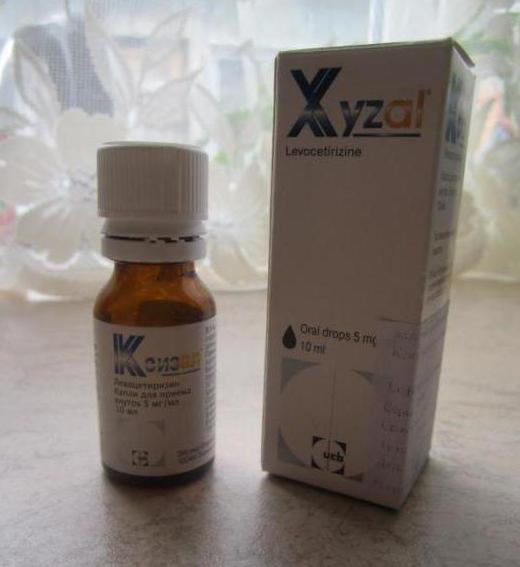
Comparison of side effects of Xizal and Suprastinex
Side effects or adverse events are any adverse medical event that occurs in a subject after administration of a drug.
Xizal's side effects are almost the same as Suprastinex's. They both have few side effects. This implies that the frequency of their occurrence is low, that is, the indicator of how many cases of an undesirable effect of treatment are possible and registered is low. The undesirable effect on the body, the strength of influence and the toxic effect of Xizal are similar to Suprastinex: how quickly the body recovers after taking it and whether it recovers at all.
Let's summarize
The drug "Xyzal" (drops) has analogues in liquid form and based on other active ingredients, which are often mistaken for absolute substitutes. This often happens with the drug Zodak. It is confused with the medicine Zodak Express. Their active ingredients also have a similar name: levocetirizine and cetirizine. Also, consumers confuse Suprastinex tablets with Suprastin, which is very different from what was previously announced. When choosing an alternative medicine, you should be very careful, since all antihistamines have their own subgroups and classifications.
Comparison of addiction between Xizal and Suprastinex
Like safety, addiction also involves many factors that must be considered when evaluating a drug.
So, the totality of the values of such parameters as “o syndrome” in Xyzal is quite similar to the similar values in Suprastinex. Withdrawal syndrome is a pathological condition that occurs after the cessation of intake of addictive or dependent substances into the body. And resistance is understood as initial immunity to a drug; in this it differs from addiction, when immunity to a drug develops over a certain period of time. The presence of resistance can only be stated if an attempt has been made to increase the dose of the drug to the maximum possible. At the same time, Xyzal has a fairly low “syndrome” value, just like Suprastinex.

